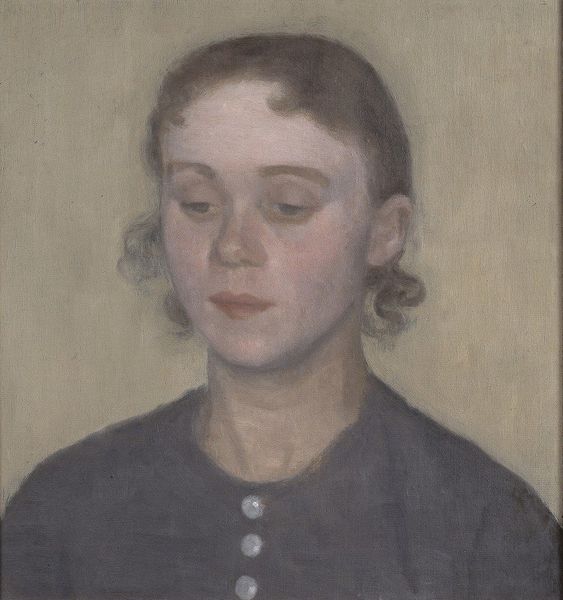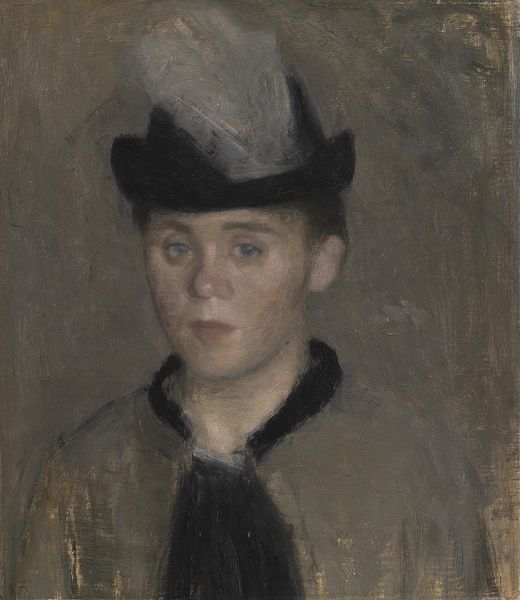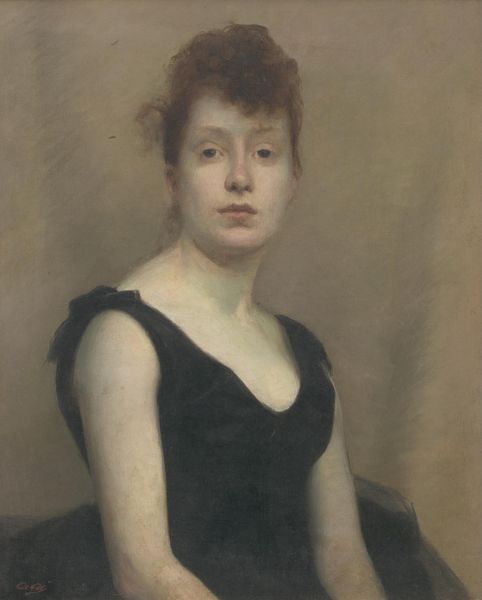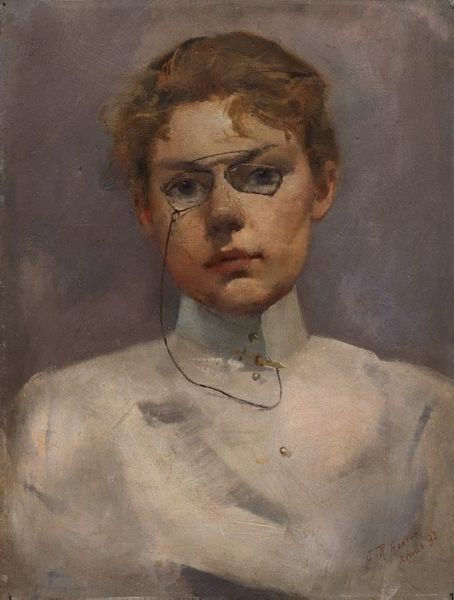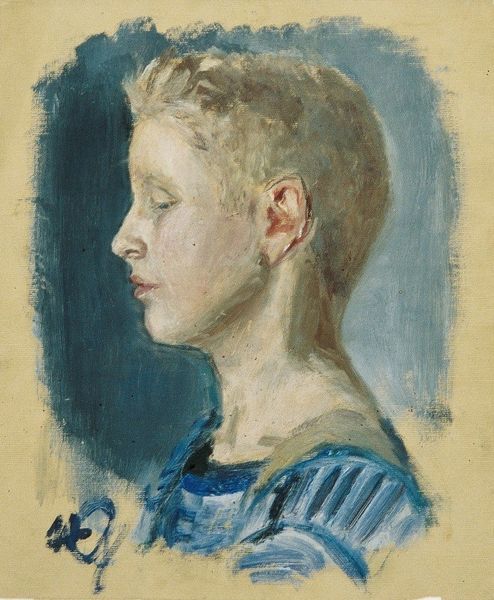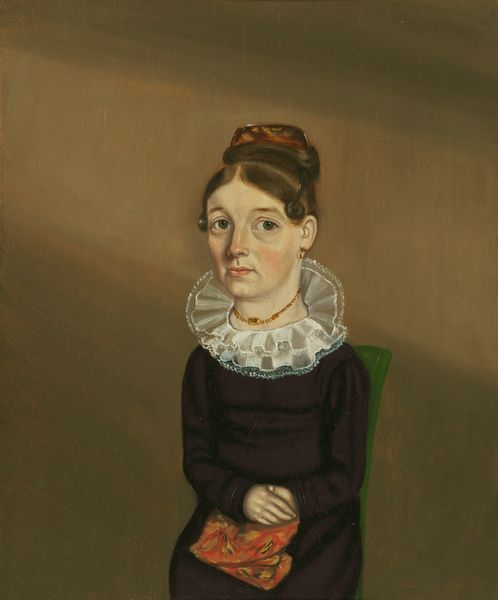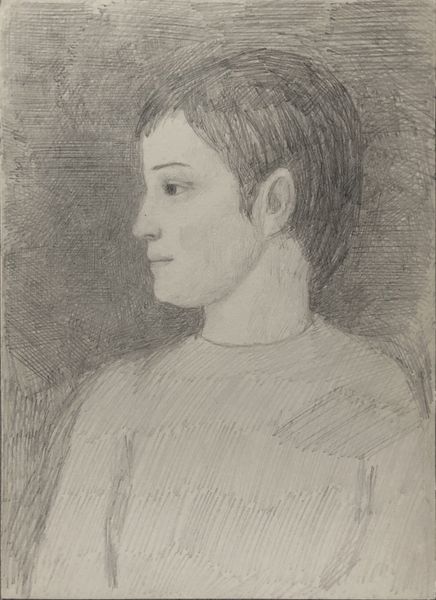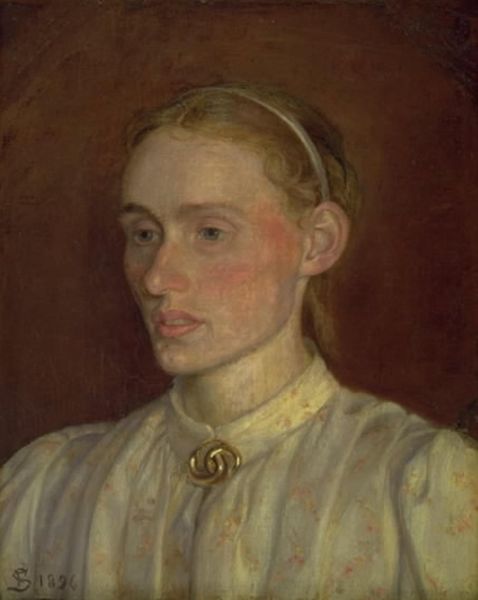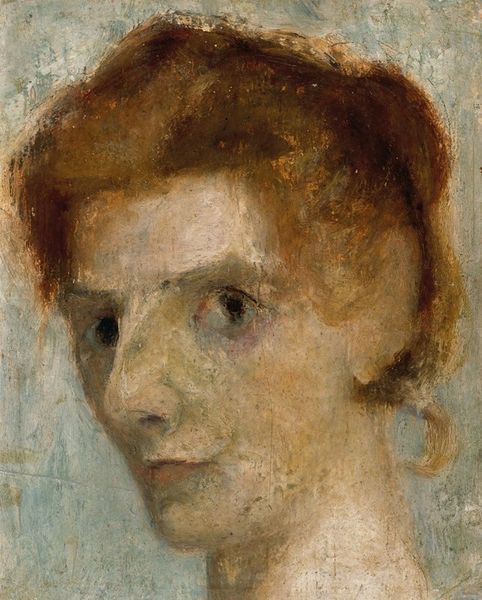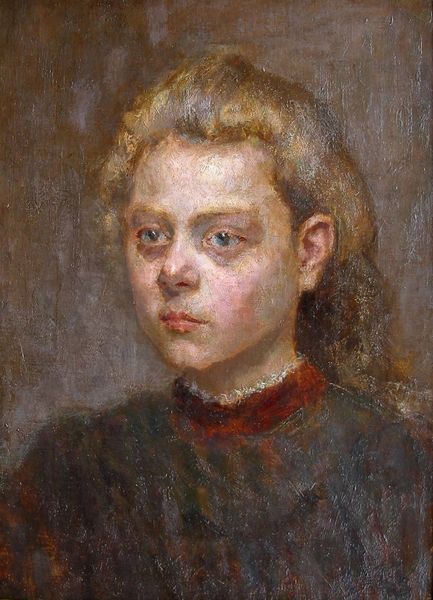
painting, oil-paint, canvas
#
portrait
#
painting
#
oil-paint
#
canvas
#
intimism
#
symbolism
#
portrait drawing
#
realism
Dimensions: 35.9 cm (height) x 33.9 cm (width) (Netto), 48 cm (height) x 46.8 cm (width) x 4.7 cm (depth) (Brutto)
Editor: Vilhelm Hammershøi’s 1894 oil on canvas, "The Artist's Wife, Ida Hammershøi, née Ilsted," presents Ida with such stillness. There's almost a sense of quiet labor in its making, the building up of these muted tones. What strikes you about this piece? Curator: The subdued palette and seemingly simple composition are precisely where the work's strength lies from a materialist perspective. Look closely: Hammershøi’s process of layering oil paint, a product itself of specific industrial advancements, creates a tangible texture that speaks to the artist’s labor. And what about the canvas itself, industrially produced? Editor: So the very act of applying the paint becomes a form of communication about labor... Curator: Precisely. This isn't just a portrait; it's a record of its own making, emphasizing the consumption of both labor and commercially available materials within a late 19th-century artistic context. Consider also, what social role does Ida play here? How is she complicit in the display or labor surrounding domestic life and the artist’s practice? Editor: I hadn’t thought of that. I was just seeing her as the subject, not thinking about the social pressures that the painting embodies. Curator: This gets us thinking about who consumes art, doesn't it? And what relationship do these consumers have to those whose labor produced the artwork? This changes my perspective about intimacy of the domestic life in 19th century Denmark and its complex economics. Thank you for prompting me to dig deeper! Editor: I learned to look more at how social and historical processes impacted the piece beyond just what’s depicted in the artwork.
Comments
No comments
Be the first to comment and join the conversation on the ultimate creative platform.
